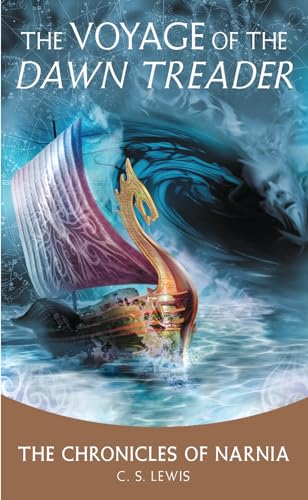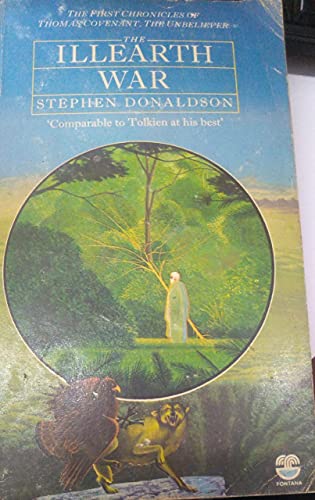
Summary
“The Voyage of the Dawn Treader” is the third published book in C. S. Lewis’s beloved Chronicles of Narnia series. The story follows Lucy and Edmund Pevensie, along with their insufferable cousin Eustace Scrubb, as they are unexpectedly transported into the magical world of Narnia through a painting of a ship. They find themselves aboard the Dawn Treader, a magnificent vessel commanded by their old friend, King Caspian X.
Caspian has embarked on a noble quest to find the seven lost Lords of Narnia, who were exiled by his evil uncle Miraz years ago. The journey takes our heroes across uncharted seas, where they encounter a series of extraordinary islands and face numerous challenges that test their courage, faith and character.
Their adventures begin in the Lone Islands, where they confront the horrors of the slave trade and rescue one of the lost lords. As they sail eastward, they encounter a variety of magical creatures and overcome several obstacles. On one island, Lucy must face her own insecurities when she’s tempted by a magic book. On another, Eustace’s selfish nature leads to his transformation into a dragon, a curse that can only be broken through Aslan’s intervention and Eustace’s own personal growth.
The crew of the Dawn Treader faces many more trials, including a pool that turns everything to gold, an island where dreams come true (in the most terrifying way), and the ominous Dark Island, where they must confront their deepest fears. Throughout their journey, they are guided by the noble and brave mouse Reepicheep, whose greatest desire is to reach Aslan’s country at the end of the world.
As they approach the edge of the world, they encounter sleeping lords, a retired star named Ramandu and his daughter, and finally, a wall of water that stretches into the sky. In a poignant farewell, Reepicheep paddles his small coracle up the waterfall, fulfilling his lifelong dream of reaching Aslan’s country.
The story concludes with Aslan appearing to Lucy, Edmund and Eustace, informing them that Lucy and Edmund have grown too old to return to Narnia. In a touching moment, Aslan reveals that they can know him by another name in their own world, emphasising that their adventures in Narnia were meant to strengthen their faith and character in the real world.
Key themes:
- Personal growth and transformation
- The power of faith and belief
- Overcoming fear and temptation
- The nature of courage and nobility
- The importance of friendship and loyalty
Character Details
Lucy Pevensie
Lucy is the youngest of the Pevensie children and one of the main protagonists of the story. Known for her unwavering faith and kind heart, Lucy possesses a special connection to Aslan and the magical world of Narnia. Throughout the voyage, Lucy faces challenges that test her self-confidence and moral strength. Her encounter with the magic book on Coriakin’s island reveals her insecurities about her appearance and her relationship with her sister Susan. Despite these moments of weakness, Lucy’s compassion and bravery shine through, particularly in her interactions with the invisible Dufflepuds and her ability to see Aslan when others cannot. Her journey in this book is one of growing maturity and learning to trust in herself as much as she trusts in Aslan.
Edmund Pevensie
Edmund, the second youngest Pevensie, has come a long way from his betrayal in “The Lion, the Witch and the Wardrobe”. In this adventure, he demonstrates wisdom, loyalty and courage. Edmund’s past experiences have made him more empathetic, especially towards his cousin Eustace. He shows great maturity in handling difficult situations, such as the temptation of the golden pool and the confrontation with the sea serpent. Edmund’s character arc in this book is subtler than in previous instalments, focusing on his role as a leader and mentor, particularly to Eustace. His ability to resist the White Witch’s temptation on Dark Island showcases his growth and strength of character.
Eustace Scrubb
Eustace begins the story as a thoroughly unpleasant character – selfish, whiny and close-minded. His transformation, both literal and figurative, forms a central part of the narrative. Initially, Eustace’s pessimistic attitude and lack of imagination make him ill-suited for life aboard the Dawn Treader. His selfishness reaches its peak when he stumbles upon a dragon’s treasure and is transformed into a dragon himself. This experience proves to be a turning point for Eustace. With the help of Aslan, he sheds his dragon skin and emerges as a changed boy. Throughout the rest of the journey, Eustace demonstrates increasing courage, selflessness and adaptability, becoming a valued member of the crew and a true friend to his cousins.
Caspian X
Now the King of Narnia, Caspian leads the expedition to find the seven lost lords. He embodies the qualities of a just and brave ruler, showing wisdom beyond his years. Caspian’s quest is not just about finding the lords, but also about proving himself as a worthy king. Throughout the voyage, he faces numerous challenges that test his leadership skills and his faith. Caspian’s interactions with his crew, particularly Reepicheep and the Pevensies, reveal his humility and willingness to learn from others. His brief temptation to abandon his duties as king to sail to the end of the world shows his human side, but ultimately, his sense of responsibility prevails.
Reepicheep
Reepicheep, the valiant talking mouse, is perhaps the most memorable character in the book. His unwavering courage, chivalrous nature and poetic speech make him both endearing and admirable. Reepicheep’s greatest desire is to reach Aslan’s country at the end of the world, a quest that drives much of the ship’s eastward journey. Despite his small size, Reepicheep possesses immense bravery and a strong moral compass. He often serves as the voice of reason and honour among the crew. His friendship with the transformed Eustace is particularly touching, showing Reepicheep’s capacity for empathy and mentorship. In the end, Reepicheep’s faith and courage are rewarded as he fulfils his lifelong dream of reaching Aslan’s country.
Reader Fit
“The Voyage of the Dawn Treader” is perfect for readers who enjoy fantasy adventures with deep moral and spiritual undertones.
It’s particularly suited for:
- Young adults and children who appreciate stories of personal growth and overcoming challenges
- Fans of classic fantasy literature and world-building
- Readers interested in allegorical tales that explore themes of faith, courage, and redemption
- Those who have enjoyed previous books in the Chronicles of Narnia series
- Anyone who loves sea adventures and tales of exploration
CEFR Classification and Learning Suitability
Estimated CEFR Level: B1 (Intermediate)
The Voyage of the Dawn Treader is a classic children’s fantasy novel with clear and accessible language, suitable for intermediate learners.
- Vocabulary: The vocabulary is straightforward and descriptive, typical of fantasy literature for young readers.
- Grammar and Structure: Sentences are mostly simple and compound, maintaining a clear narrative flow.
- Themes: The novel explores themes of adventure, discovery and personal growth, presented in an engaging and easy-to-understand manner.
- Dialogue and Style: Dialogue is natural and easy to follow, enhancing the novel’s magical and adventurous tone.
Recommendation:
This book is ideal for intermediate learners who enjoy classic fantasy stories with clear language and imaginative themes.
Quick Facts
- Genre: Children’s Fantasy
- Publication Year: 1952
- Reading Time Estimate: 5-7 hours
- Notable Awards: None specific to this book, but the Chronicles of Narnia series is widely acclaimed
Related Books
- “The Silver Chair” by C. S. Lewis (the next book in the Chronicles of Narnia series)
- “The Hobbit” by J.R.R. Tolkien
- “A Wrinkle in Time” by Madeleine L’Engle
Buy the Book
Embark on an unforgettable journey to the Eastern seas of Narnia with “The Voyage of the Dawn Treader”. This enchanting tale of courage, redemption and wonder will captivate readers of all ages.
Don’t miss out on this classic adventure – get your copy today and set sail with Lucy, Edmund and Eustace on the magnificent Dawn Treader!

